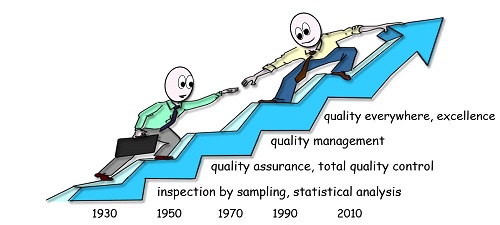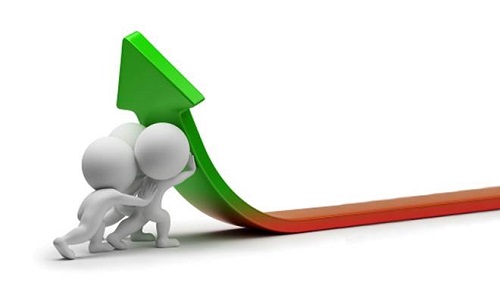1 Kaizen approach
1.1 History
How Kaizen was born

In the code of King Hammurabi of Babylon (1730 BC), we find one of the oldest written traces of quality requirements:
- if an architect builds a house and one of the walls falls, this architect will consolidate this wall at his own expense
- if an architect builds a house and the house collapses and the master of the house is killed, that architect is liable to death
Of course, at that time, customs were very strict. Now by making poor quality, we risk much less, but in the face of global competition to stay on the market and win new customers, we must necessarily make efforts to improve constantly and seek excellence.
The Kaizen approach is a universal solution to achieve this objective. Its origins and development took place in Japan after the end of the Second World War. This is one of the keys to the success of Japanese competitiveness, because everyone has understood that mastering quality pays off.
In the 1950s, the Americans Edwards Deming and Joseph Juran largely contributed to the dissemination and use of statistical quality control methods in Japan. They themselves were inspired by Walter Shewhart's theory of knowledge and management in industrial manufacturing. In his work from 1925 to 1956 at Bell Laboratories, Shewhart implemented control charts with common causes and special causes, the PDCA cycle and other statistical methods of quality assurance.
One of the founders of the Kaizen approach is Taiichi Ohno, author of the TPS (Toyota Production System), the JIT (Just In Time) and other waste-hunting tools.
Another pillar of quality management theory (and practice) is Kaoru Ishikawa. He is the author of the cause-and-effect diagram (fishbone diagram), he successfully developed quality circles, TQC (Total Quality Control), education on a very large scale to apply quality everywhere and by everyone in the company.
The man who made known and adapted the word and the Kaizen approach throughout the world is Masaaki Imai, a consultant and adviser since the 1960s. In 1986, he founded the Kaizen Institute, which now has subsidiaries on all continents, to disseminate the Kaizen concept, philosophy and strategy. His books are bestsellers and have been translated into over 14 languages.
The challenge won by the majority of Japanese managers during the second half of the 20th century originated from after the meticulous application of continual improvementpermanent process allowing the improvement of the global performance of the organization (see also ISO 9000, 3.2.13 and ISO 14 001, 3.2) based on a few rules and concepts (see also the 10 commandments, annex 01): 
- involvement of all staff:
- education and training for all
- top management-supported suggestion system
- the 5 S daily method (improvement starts with oneself)
- tracking down all possible waste in all departments
- the process approach before the results
- quality control and not quality inspection (inspection does not lead to quality)
- top management is responsible for quality, not the staff
- quality control is everyone's business
- not being afraid of problems, because every problem is an opportunity for improvement (there is no improvement where there are no problems)
- use quality tools on a daily basis (Pareto, Ishikawa, Poka-Yoké, control charts, 5 W, etc.)
- standardize results to eradicate known problems (there is no improvement where there are no standards)
- promote common sense, not expense
- just in time versus just in case
- suppliers (internal and external) are our partners and not our enemies
- find the conditions for the fulfillment of staff at work
- maintain discipline by all
1.2 Benefits
Benefits of the Kaizen approach

The benefits of applying the Kaizen approach are multiple:
- improved process performance and product quality
- better efficiency
- reduced costs
- shortened deadlines
- low improvement costs
- work is easier
- safety is enhanced
- the suggestions are many and diverse
- communication is real and transparent in both directions
- staff take pride in their work
- and, of course, the most important customers are more satisfied
.jpg) Minute of relaxation. Paganini's violin concert performed with facial expressions.
Minute of relaxation. Paganini's violin concert performed with facial expressions.
